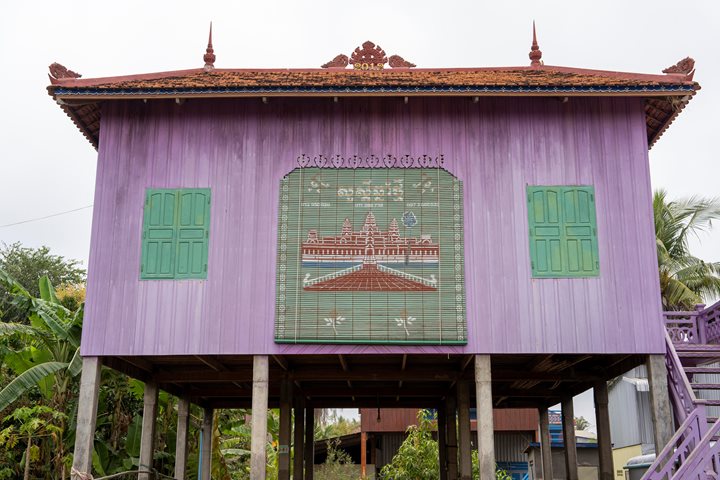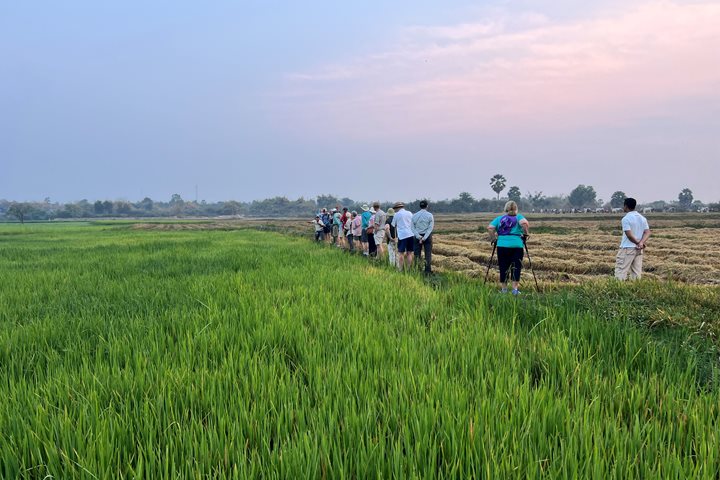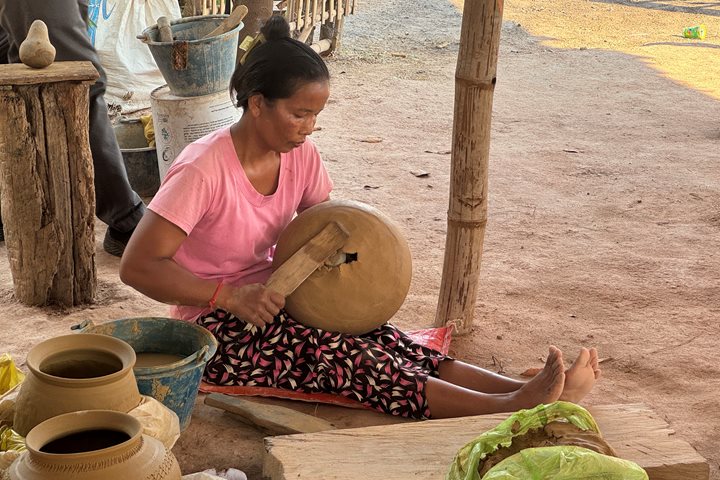Even before the sun rose over the mighty Mekong River, the RV Jahan was making her way to our morning’s destination; the wholesale produce floating market at the bustling river port at Cai Be. Today is the new moon and the tidal range is extreme, over 6 ft between high and low tide, even though we are over 100 km from the sea. We cruise past boats of all shapes and sizes as they advertise their wares by putting a sample of the item for sale on the top of a wooden stick on the bow. Here is a watermelon salesman, there a papaya and mango merchant. Once you know the system, it is easy to identify what produce each of the myriad ships is offering for sale! It is fascinating to watch as literally hundreds of shoppers, all travelling by a boat of some type, stop at their chosen vendor to pick up fresh produce.
Further up the river we stop at a family-run business all based on usages for rice! We are treated to the making of rice paper by hand, harder than it looks as some of us can testify! When added to coconut and palm sugar rice can be made into a delicious candy, with special additives like ginger or garlic to mix up the flavours. Rice thrown into scalding hot black sand over an open fire will “pop”, just like our own popcorn. Once separated from the sand this can be mixed with palm sugar and other flavourings to create a scrumptious rice crispy treat! But perhaps the best usage of rice here was the distilling of rice wine, guaranteed by our local guide to never cause a hangover, regardless of how much one imbibes!
Our afternoon excursion takes us by covered sampan boats to Binh Thanh Island. This island is roughly 10 x 6 km, but is home to over 22,000 residents. On our way to the main village we pass hundreds of small family run fish farms. The fish of choice for these farmers is the red tilapia, a fish that will grow to a market size of about a pound from a mere fingerling in 5 to 6 months. There are literally millions of these captive fish in mesh pens along the river. Needing to feed the fish twice daily, many of the farmers are scooping out fish food from large bins and throwing it into the pens where the hungry fish swarm and vie for the afternoon meal.
What this island has become famous for however is not farmed fish, this island has a reputation of making fine rattan mats. These mats are made by hand in a process little changed for decades and perhaps centuries. Usually taking two adults to work together, each strand of rattan is fed into a giant loom, then pressed into place with the mighty pull of a heavy wooden bar. The next strand is fed by a second adult and the process repeats itself over and over again. Mat makers usually squat in position that most westerners would find difficult to attain, let alone to work the loom in for hours at a time! The end product is then washed and put into the sun to dry, then transported to market in various locations around the island. Depending on the size of the mat, it may take several hours to a couple of days to create a mat that will bring the equivalent of $5 to $25 USD.
Back on board for the sunset we find ourselves ending the day just as we began it; admiring the beauty of the sunlight glistening off boats of all shapes and sizes here on the mighty Mekong River!







